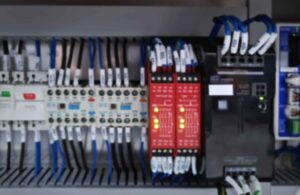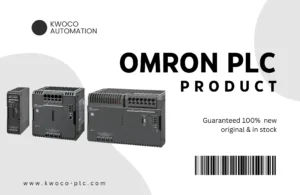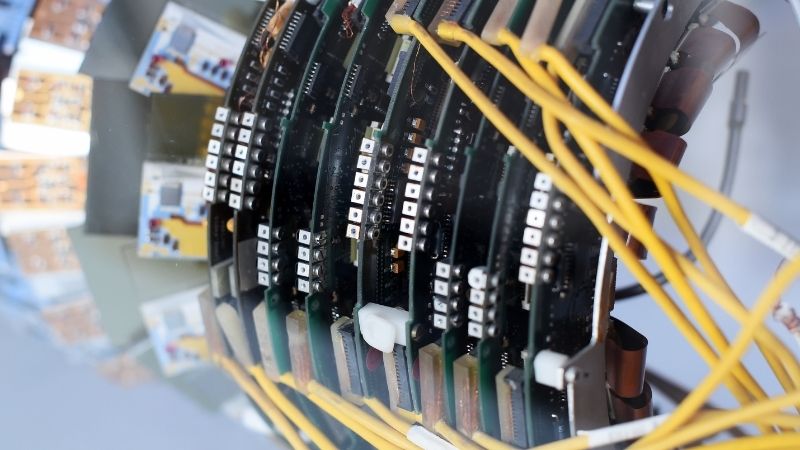Întrerupătoare de limită explicate: tipuri, utilizări și principii de funcționare
Acest articol analizează tipurile de întrerupătoare de limită, cum funcționează și de ce rămân indispensabile în ciuda creșterii proximității senzori.
Cuprins
Ce sunt întrerupătoarele de limită?
Întrerupătoarele de limită sunt dispozitive electromecanice care răspund la contactul fizic. Când un obiect aplică forță asupra actuatorului comutatorului, acesta declanșează o conexiune electrică pentru a se întrerupe sau a se întrerupe.
Această funcționalitate permite comutatoarelor de limită să detecteze poziția, mișcarea sau prezența unui obiect, permițând un control precis în cadrul unui sistem. Aceste comutatoare și-au primit numele deoarece au fost utilizate inițial pentru a defini limita de călătorie a unui obiect.
Tipuri de întrerupătoare de limită
Există patru tipuri principale de întrerupătoare de limită, fiecare potrivit pentru diferite aplicații, în funcție de forma și funcția actuatorului. Să explorăm aceste tipuri:
- Mustăţi: Dispozitivul de acționare seamănă cu o mustață sau un fir și este potrivit pentru aplicații cu contact ușor.
- Rolă: Echipat cu un mecanism de rulare, acest tip este ideal pentru aplicațiile în care obiectele trebuie să treacă.
- Pârghie: Un tip clasic cu un actuator cu pârghie, utilizat în mod obișnuit pentru aplicații de uz general.
- Piston: Acest tip are un mecanism de împingere directă și este utilizat în mod obișnuit în aplicații grele.
În funcție de aplicație, unele întrerupătoare de limită pot combina două tipuri, cum ar fi un comutator cu pârghie cu role, pentru a satisface nevoi specifice.
Aplicații ale comutatoarelor de limită
Întrerupătoarele de limită sunt peste tot, de la articole de uz casnic de zi cu zi până la mașini industriale. Câteva exemple comune includ:
- Uși frigidere: Când deschideți frigiderul, un întrerupător de limită activează lumina interioară, stingând-o când ușa se închide.
- Usi de garaj: În ușile de garaj suspendate, întrerupătoarele de limită asigură că ușa se oprește din mișcare odată ce ajunge în poziția complet deschisă sau închisă.
- Utilaje industriale: În fabrici, întrerupătoarele de limită detectează prezența containerelor pe liniile de asamblare sau poziția pieselor în mișcare, îmbunătățind eficiența și siguranța.
Cum funcționează întrerupătoarele de limită?
Un întrerupător de limită constă dintr-un actuator conectat mecanic la un întrerupător electric. Atunci când un obiect intră în contact cu actuatorul, determină deschiderea sau închiderea circuitului întrerupătorului, în funcție de configurație. Acest mecanism permite un control fiabil și consecvent în diverse aplicații, de la simple comenzi de iluminare până la sisteme automate complexe.
Configurații de întrerupătoare de limită
Limitatoarele vin în mai multe configurații, în principal:
- Normal deschis (NU): Circuitul este deschis până când comutatorul este activat.
- Normal închis (NC): Circuitul este închis până când comutatorul este activat.
- SPDT (un singur pol dublu aruncare): O combinație de configurații NO și NC, permițând un control mai complex.
Aceste configurații oferă flexibilitate, permițând ca întrerupătoarele de limită să fie personalizate pentru diferite sisteme electrice și mecanice.
Simboluri întrerupătoare de limită
În schemele electrice, diferite simboluri reprezintă întrerupătoarele de limită, variind în funcție de standard. Două standarde principale pentru simbolurile comutatoarelor de limită sunt:
- IEC (Comisia Electrotehnică Internațională): Un standard internațional utilizat pe scară largă.
- NEMA (Asociația Națională a Producătorilor de Electricitate): Un standard american întâlnit frecvent în aplicațiile nord-americane.
Înțelegerea acestor simboluri este esențială pentru interpretarea schemelor electrice, în special în aplicațiile globale în care echipamentele pot urma standarde diferite.
Senzori de proximitate vs. întrerupătoare de limită
Deși senzorii de proximitate au devenit mai des întâlniți în mediile industriale, întrerupătoarele de limitare sunt încă utilizate pe scară largă, mai ales în mediile care necesită durabilitate. Spre deosebire de întrerupătoarele de limită, senzorii de proximitate nu au piese în mișcare, reducând uzura.
Cu toate acestea, întrerupătoarele de limită excelează în robustețe și pot gestiona sarcini de curent mai mari, făcându-le mai potrivite pentru aplicații cu solicitări ridicate. În scenariile în care fiabilitatea în medii dure este esențială, întrerupătoarele de limită rămân alegerea preferată.
Alimentați-vă proiectele cu PLC Omron, Mitsubishi, Schneider nou-nouț, original – în stoc, gata acum!
Concluzie
Întrerupătoarele de limită sunt o componentă indispensabilă în diverse industrii, oferind un control fiabil și precis în sisteme, de la aparate electrocasnice la mașini industriale.
În timp ce senzorii de proximitate sunt în creștere, întrerupătoarele de limită continuă să își mențină terenul datorită robusteții și adaptabilității lor. Înțelegând tipurile, configurațiile și aplicațiile întrerupătoarelor de limită, puteți lua decizii mai informate în selectarea celei mai bune opțiuni pentru aplicația dvs.
Căutați PLC-uri noi, originale pentru proiectele dvs.? La Kwoco, stocăm cele mai noi PLC-uri de la mărci de top precum Omron, Mitsubishi, și Schneider. Cumpărați cu încredere - livrare rapidă, calitate garantată! Cumpărați acum
Contactaţi-ne
Doar completați numele dvs., adresa de e-mail și o scurtă descriere a solicitării dvs. în acest formular. Vă vom contacta în termen de 24 de ore.
Categoria de produs
Produse de vânzare fierbinte
De asemenea, puteți găsi aceste subiecte interesante

Ce este un RTC într-un PLC? Înțelegerea ceasurilor în timp real
Ceasurile în timp real (RTC) joacă un rol crucial, dar adesea trecut cu vederea în automatizarea industrială, asigurându-se că controlerele logice programabile (PLC) execută sarcinile sensibile la timp cu precizie.

10 lucruri pe care trebuie să le știți despre tipul procesorului Omron
10 lucruri pe care trebuie să le știți despre tipul de procesor Omron Ca inginer cu ani de experiență în industria industrială

Explorați controlerele Siemens SIMATIC: un ghid cuprinzător pentru soluții
Acest articol analizează rolul critic al întrerupătoarelor de deconectare în asigurarea siguranței și eficienței operaționale în diverse aplicații industriale. Vom explora diferite tipuri de întrerupătoare de deconectare, funcțiile acestora și cum să-l alegem pe cel potrivit pentru nevoile dumneavoastră specifice. Indiferent dacă sunteți un inginer experimentat într-o fabrică de mașini sau un manager la o fabrică de producție, înțelegerea întrerupătoarelor de deconectare este vitală. Acest ghid cuprinzător vă va oferi cunoștințele necesare pentru a lua decizii informate, sporind atât siguranța, cât și productivitatea în operațiunile dumneavoastră.






